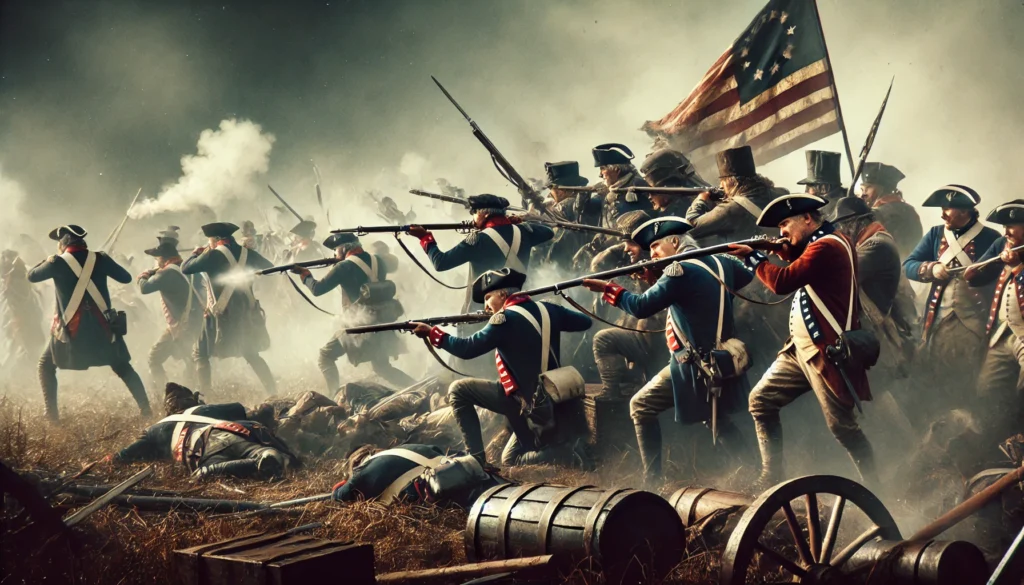Water Bottles in 18th-Century Warfare
Water Bottles in 18th-Century Warfare As we think about the 18th century, particularly during events like the American Revolutionary War in 1781, modern conveniences like insulated water bottles or hydration packs are unimaginable. However, the availability of potable water remained a critical concern for the troops, even in the absence of sophisticated hydration equipment. What follows is an examination of the means, techniques, and obstacles faced by soldiers in 1781 when it came to transporting and consuming water.
-
Components of Water Bottles from the Eighteenth Century
Materials such as leather, wood, glass, and pewter were commonly used to construct the “canteens” or water carriers during the 18th century. Distinct benefits and drawbacks were associated with each material:
-
Leather
:
- Leather was commonly used in both Europe and the Americas. A leather flask, sometimes lined with tar or wax, could help soldiers keep water from leaking and keep it fresh for longer. While the long-lasting nature of leather had its benefits, it was prone to leaks in the event that the lining developed cracks, particularly when subjected to continuous weather conditions.
-
Wood:
- Wooden canteens were also popular, often crafted in a barrel-like shape to maximize storage. These could be airtight, and the organic substance contributed to the cooling effect of the water. On the other hand, regular maintenance was required because wood could easily rot or split.
-
Pewter and Metal:
- Pewter was a popular choice for wealthier officers or for countries that could afford metalworking at scale. While metal canteens were more durable, they could get hot in the sun and flavor the water with a metallic aftertaste.
-
Glass:
- Some soldiers carried glass containers, usually for spirits rather than water due to the fragility of glass. Glass was more commonly seen among officers or used as a specialty item; however, the ordinary soldier would not have preferred it.
-
Transporting Water on the Move
It was difficult to transport water while marching in formation or on long marches. It was common practice for soldiers to carry their canteens on a strap across their bodies so they could move about without using their hands. On occasion, supply wagons would carry bigger barrels of water, which would be filled up at nearby rivers and streams.
The reliability of water sources, however, was questionable at times, particularly when traversing enemy territory or during dry seasons. Armies frequently made water access a top priority by staking out positions near rivers or springs because of this unpredictability.
-
Water and Health in the Field
For soldiers, water was more than simply a necessary fluid for staying alive. Dysentery and other diseases were common among Revolutionary War soldiers because of the water contamination. Due to the high concentration of waste and animal carcasses in the water near battlefields, potable water is in short supply.
As a result, troops would occasionally boil water or “purify” it with a little rum to avoid this problem. Because they were fermented, alcoholic beverages like rum, beer, and others were less likely to transmit waterborne diseases, which contributed to their widespread popularity. The risk of intoxication or dehydration was one of the drawbacks of this practice.
-
Water as a Tactical Resource
It was more than simply a question of staying alive; the availability of clean water was a crucial factor in military strategy. It was common practice for both American and British armies to locate their camps close to water sources during the Revolutionary War. Being able to control a local water supply could mean the difference between success and failure during sieges or protracted battles.
For example, in 1781, when American and French forces besieged British troops at Yorktown, the availability of water and supplies was of the utmost importance. The enemy’s resolve and health could be eroded by withholding water from them, eventually leading to capitulation without open conflict.
Water Bottles in 18th-Century Warfare
In 1781, water bottles, also called “canteens,” were very different from how we think about hydration now. In spite of their meager means, the pioneers’ innovative strategies and equipment were ahead of their time. Containers made of metal, wood, or leather allowed soldiers to transport water, but they also mirrored the constraints and difficulties of the time. The resourcefulness and resilience of the warriors of the 18th century shone through as they adapted to their environment and made do with limited resources, even though they had access to clean water.









Cihangir su kaçağı tespiti Beşiktaş’ta su kaçağı tespiti için kesinlikle doğru adres! Profesyonel hizmet. https://fcschalke04fansclub.com/ustaelektrikci